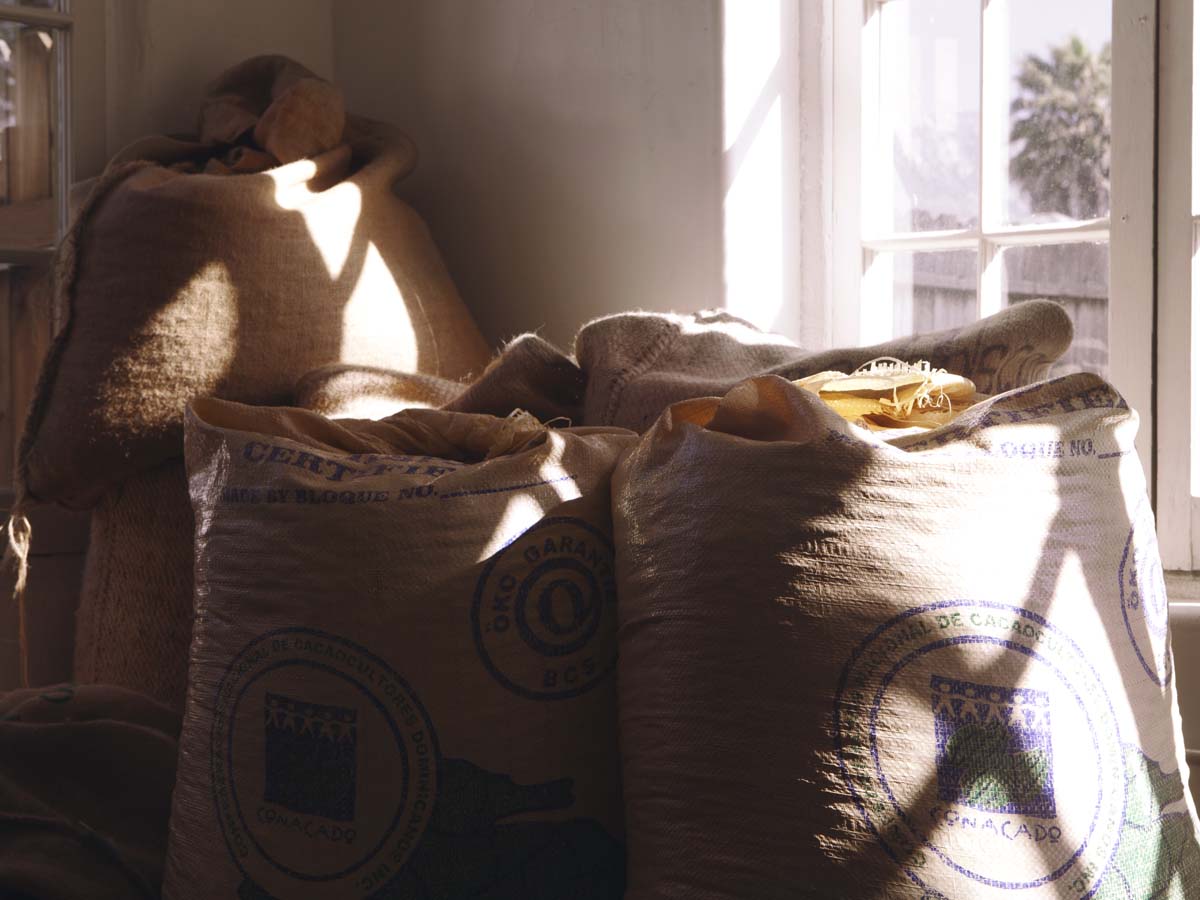
Our chocolate making process starts with high quality cocoa beans sourced from estates, plantations, and co-ops around the world.

Raw cocoa beans are sorted by hand to remove defective and foreign debris (sticks, leaves, rocks, etc…).
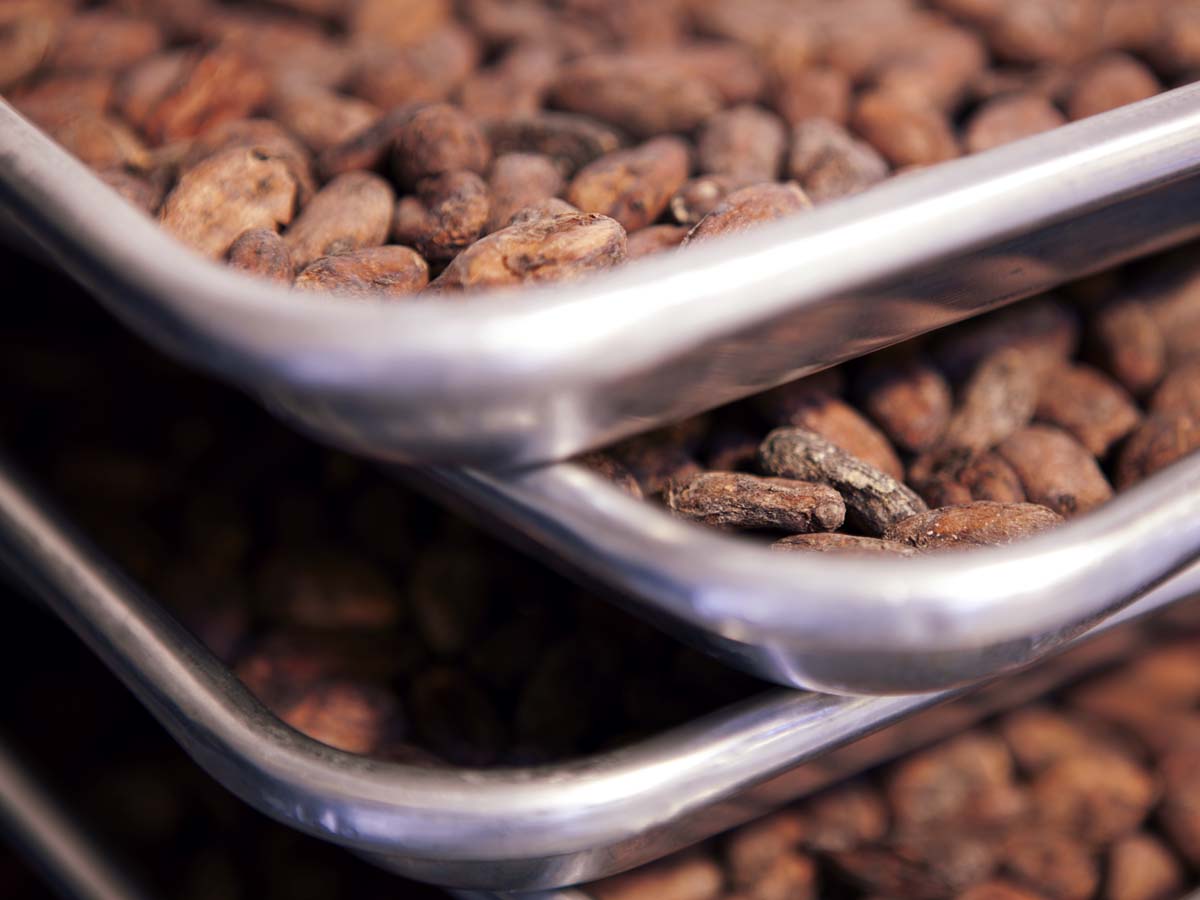
Sorted beans get weighed and spread out onto trays for roasting.
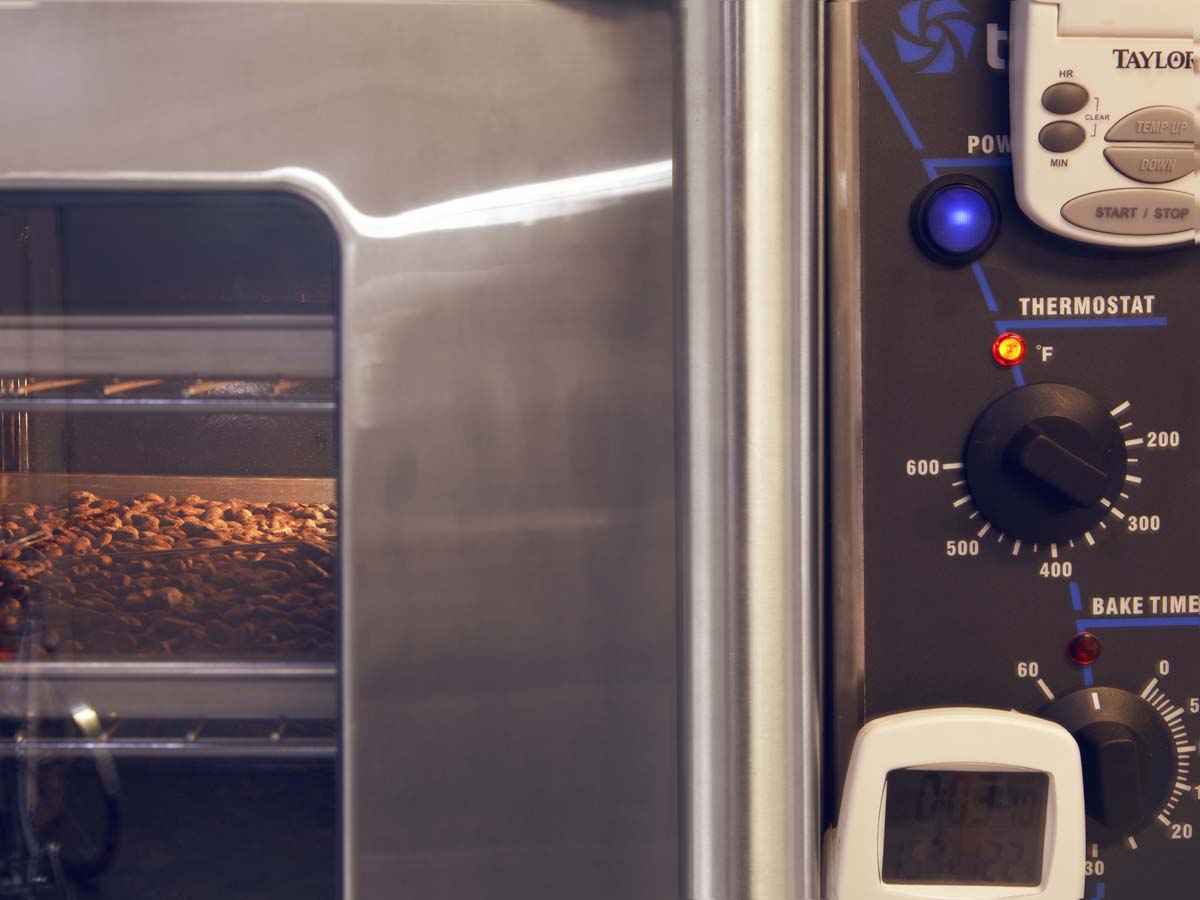
Beans are roasted from 30 to 60 minutes at temperatures from 230F to 300F to further develop chocolate flavor.
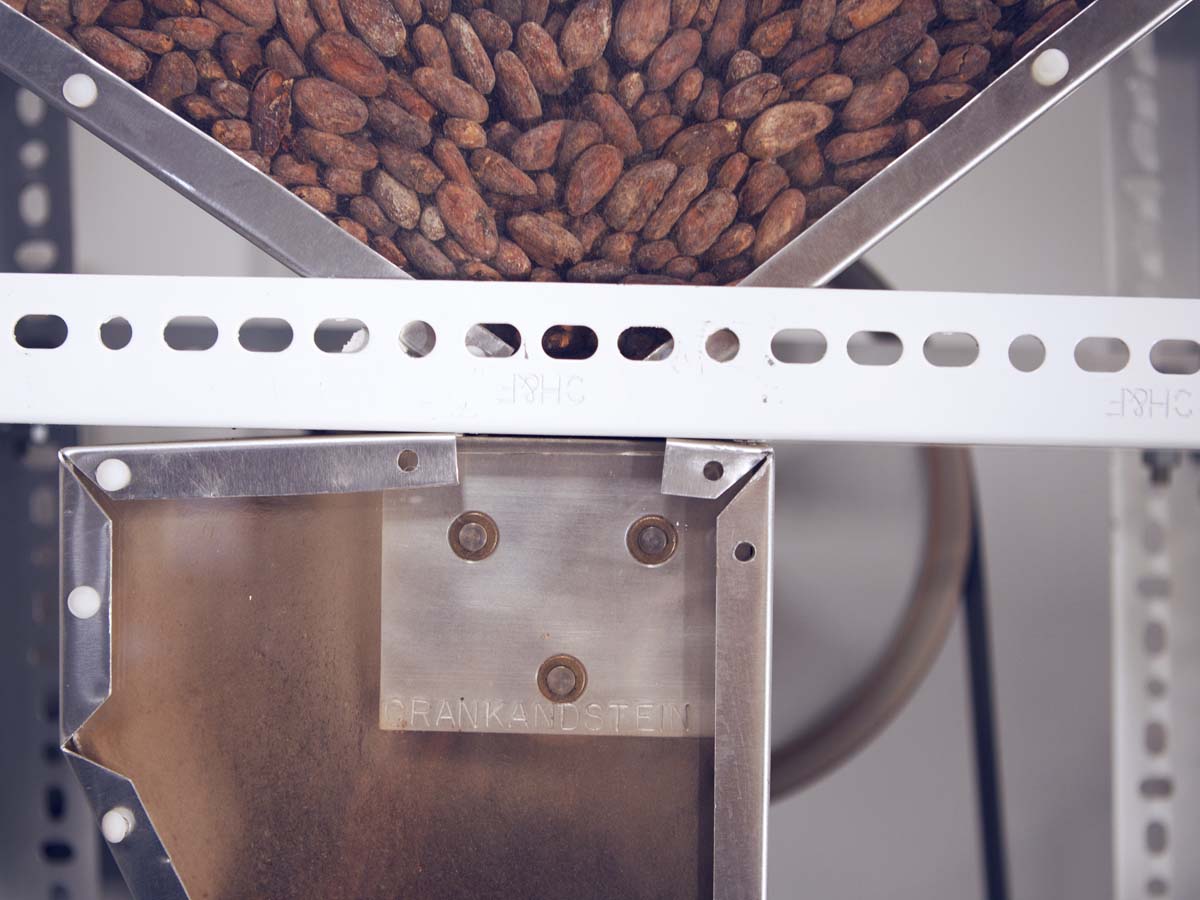
Cooled beans are then coarsely crushed to loosen the shell from the nib.
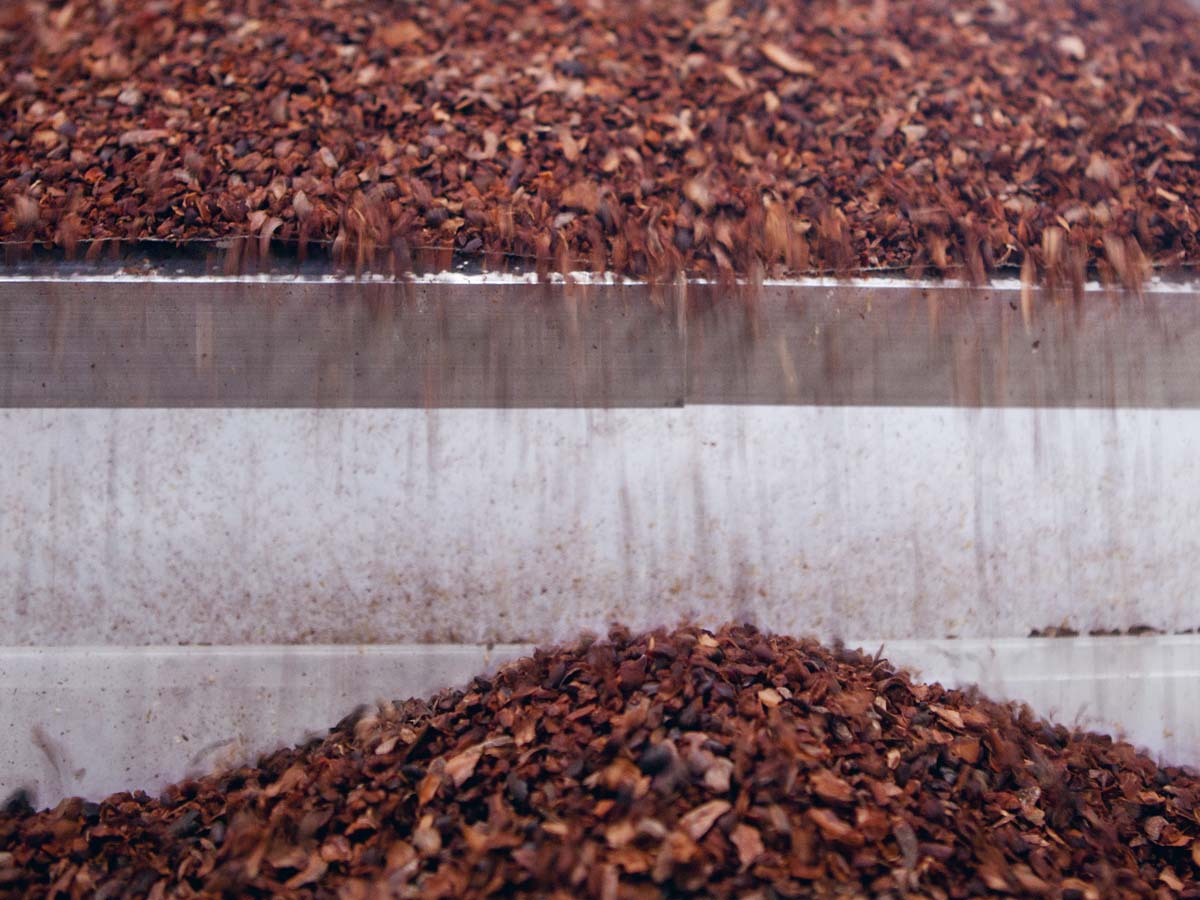
The mixture of crushed nib and shell is then sorted by size.
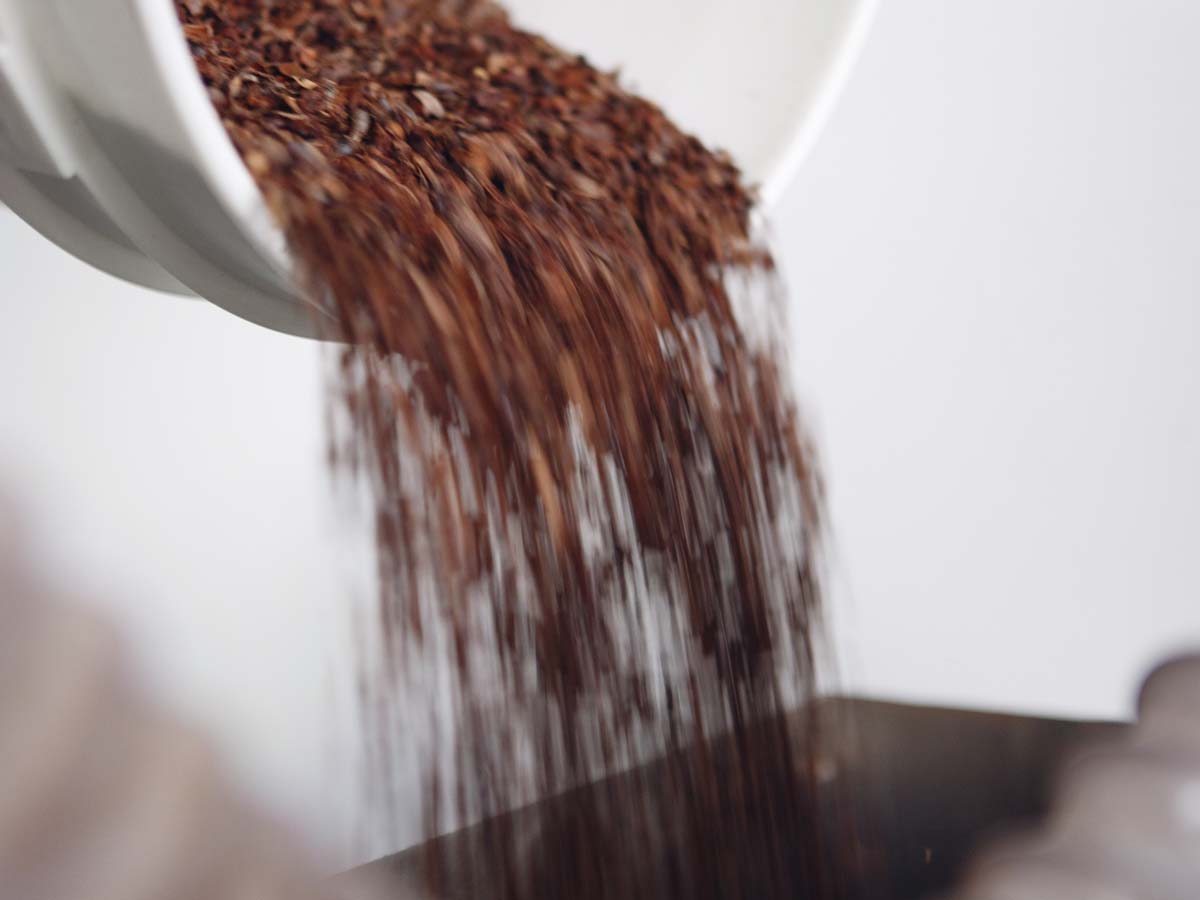
The sorted nib and shell mixture gets poured into the winnower for separation.
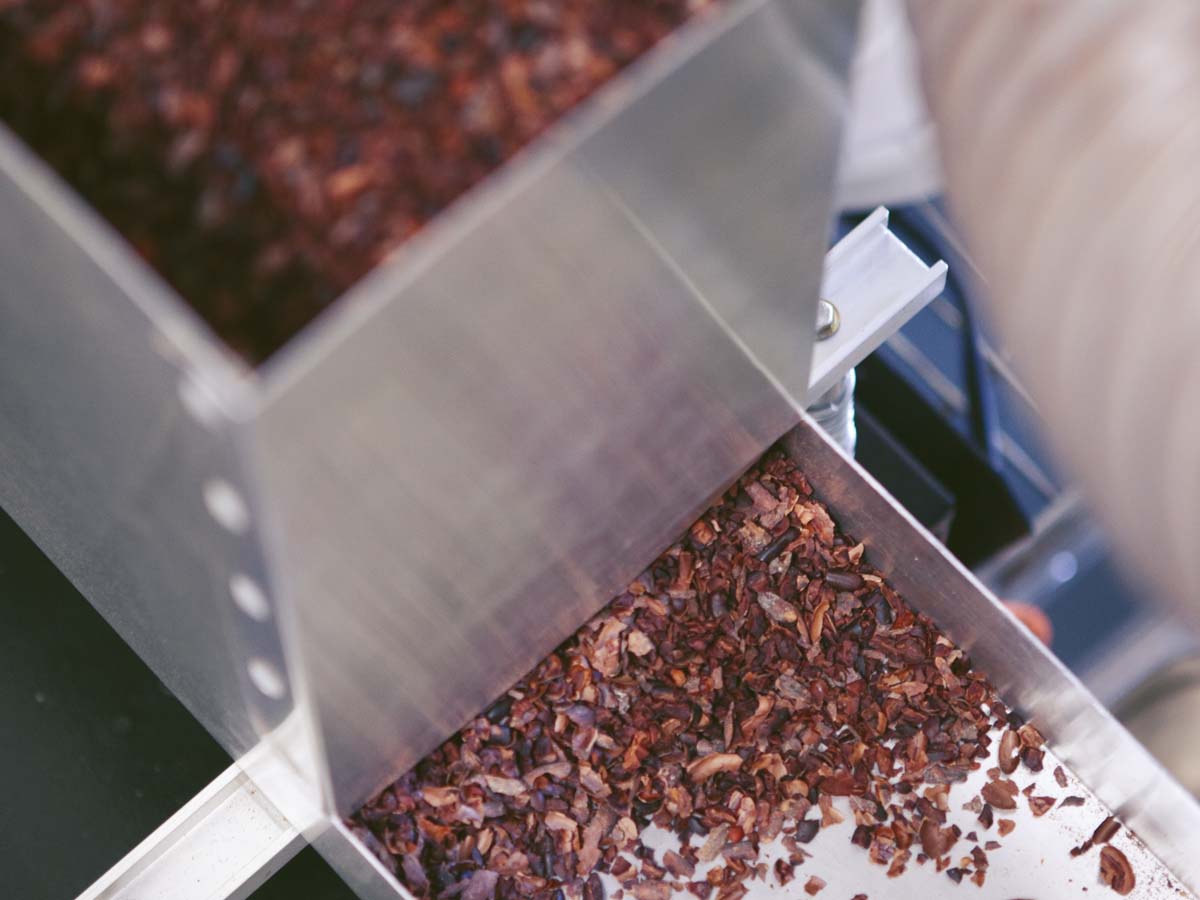
Nib and shell are fed into an air current. The lighter shell is carried away, allowing the cleaned nib to be collected.
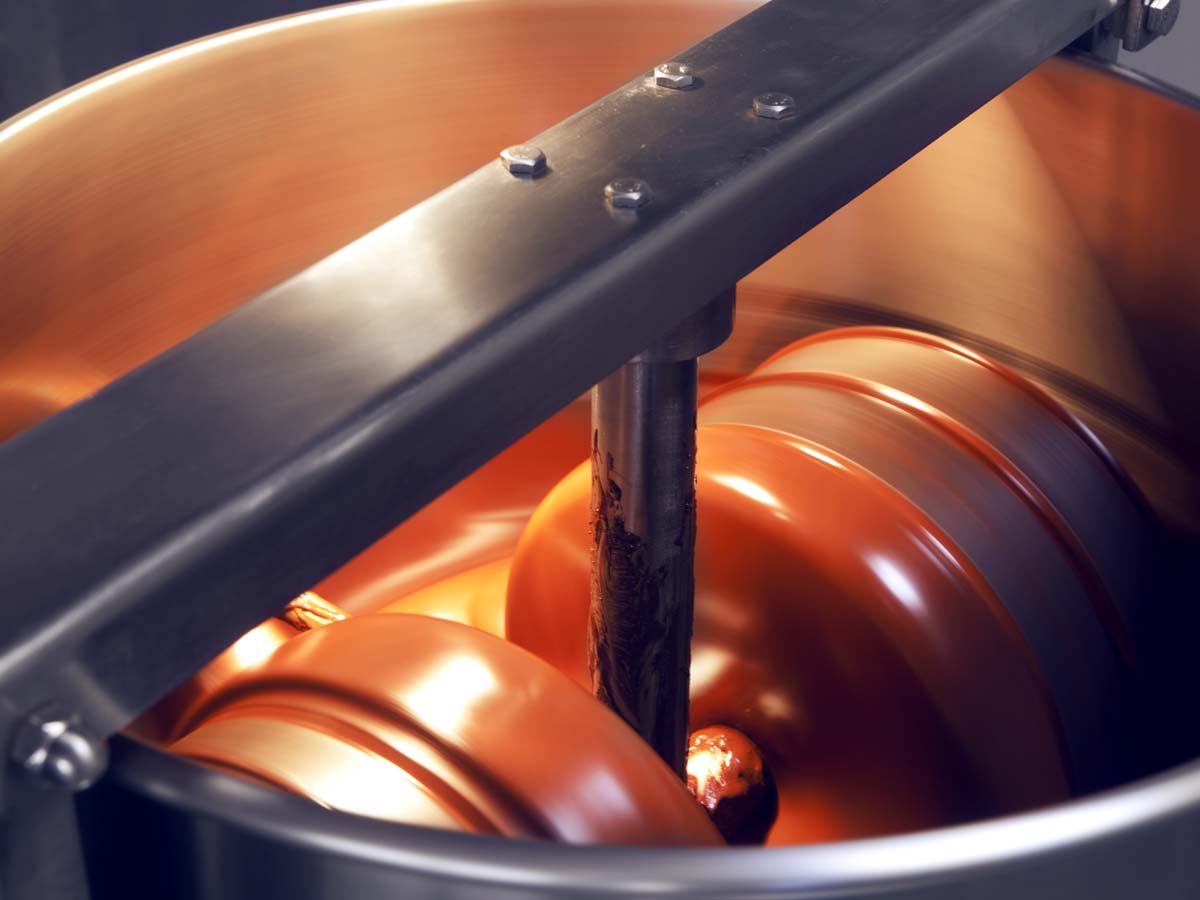
Nibs and sugar are refined (and concurrently conched) until the texture is smooth and the flavor has developed fully.

Finished chocolate is poured into 20–40-lb blocks and left to age for 2—8 weeks to allow the flavors to settle.
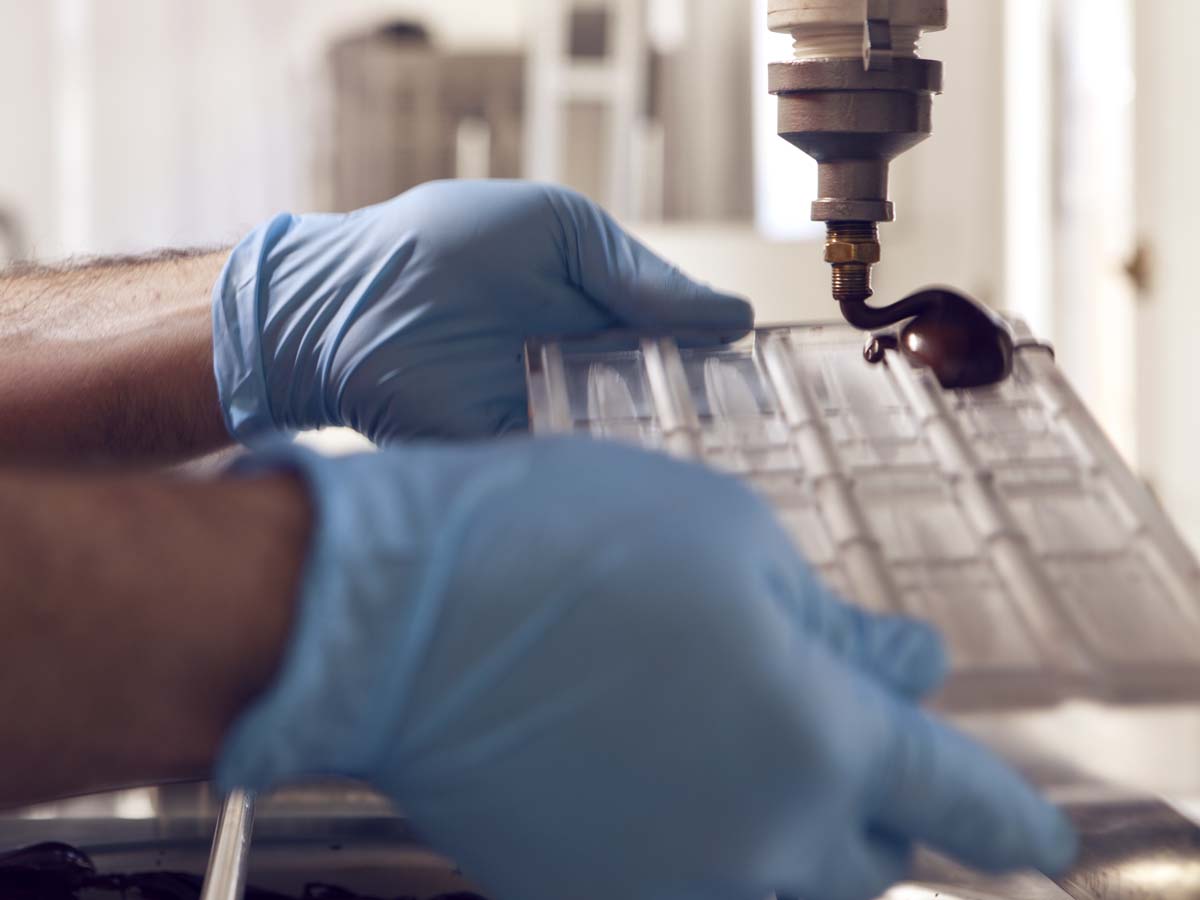
Chocolate is then tempered and dispensed into molds.
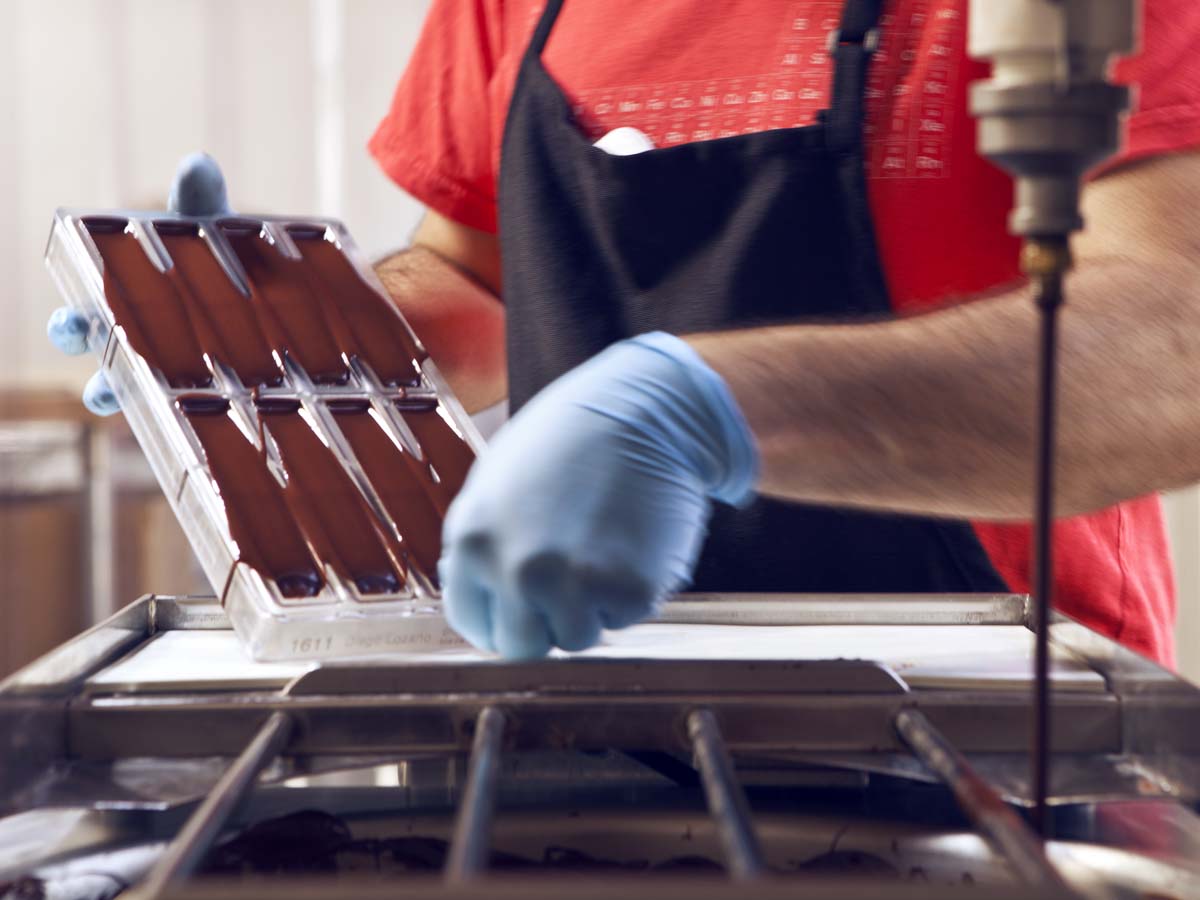
Dispensed chocolate is distributed evenly in the molds with a vibrating table.
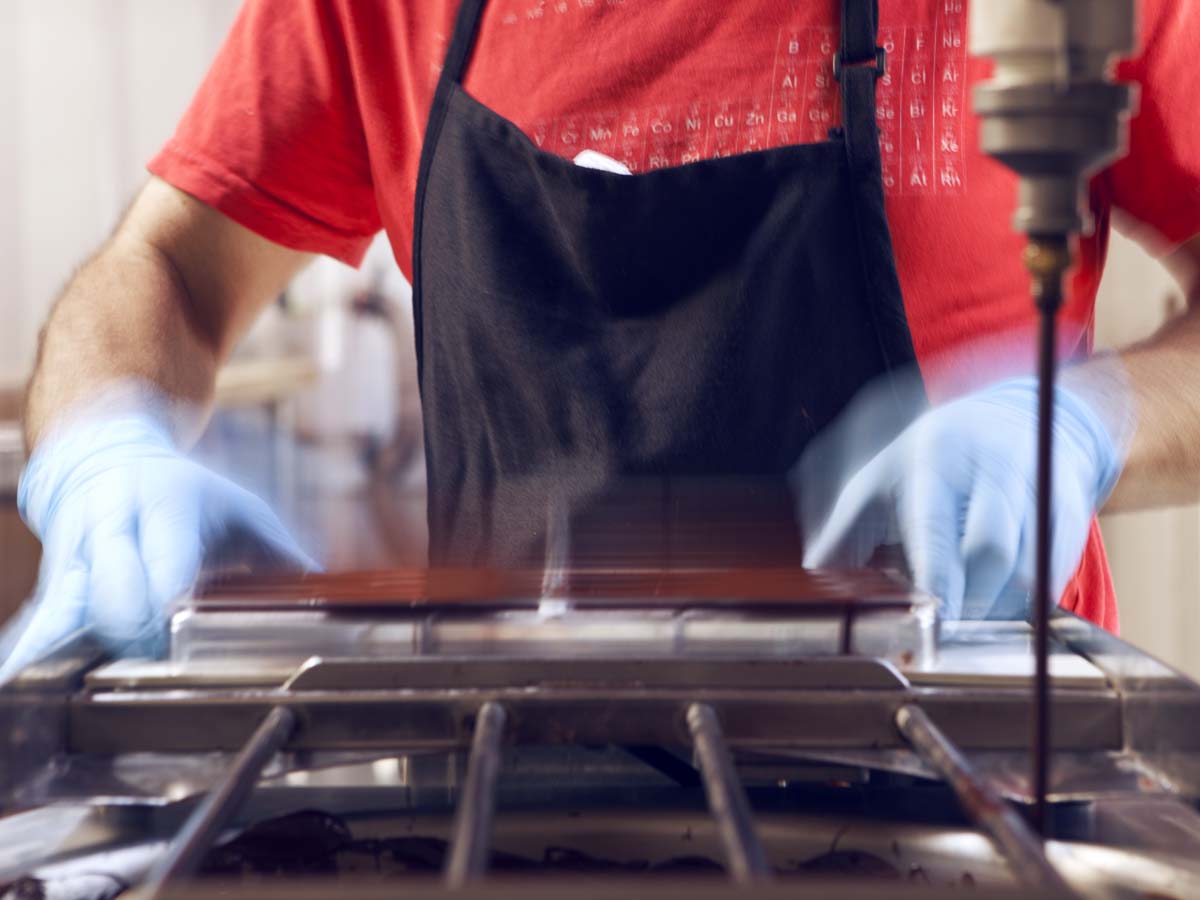
Air bubbles are also removed on the vibrating table, while also leveling the chocolate in the mold.
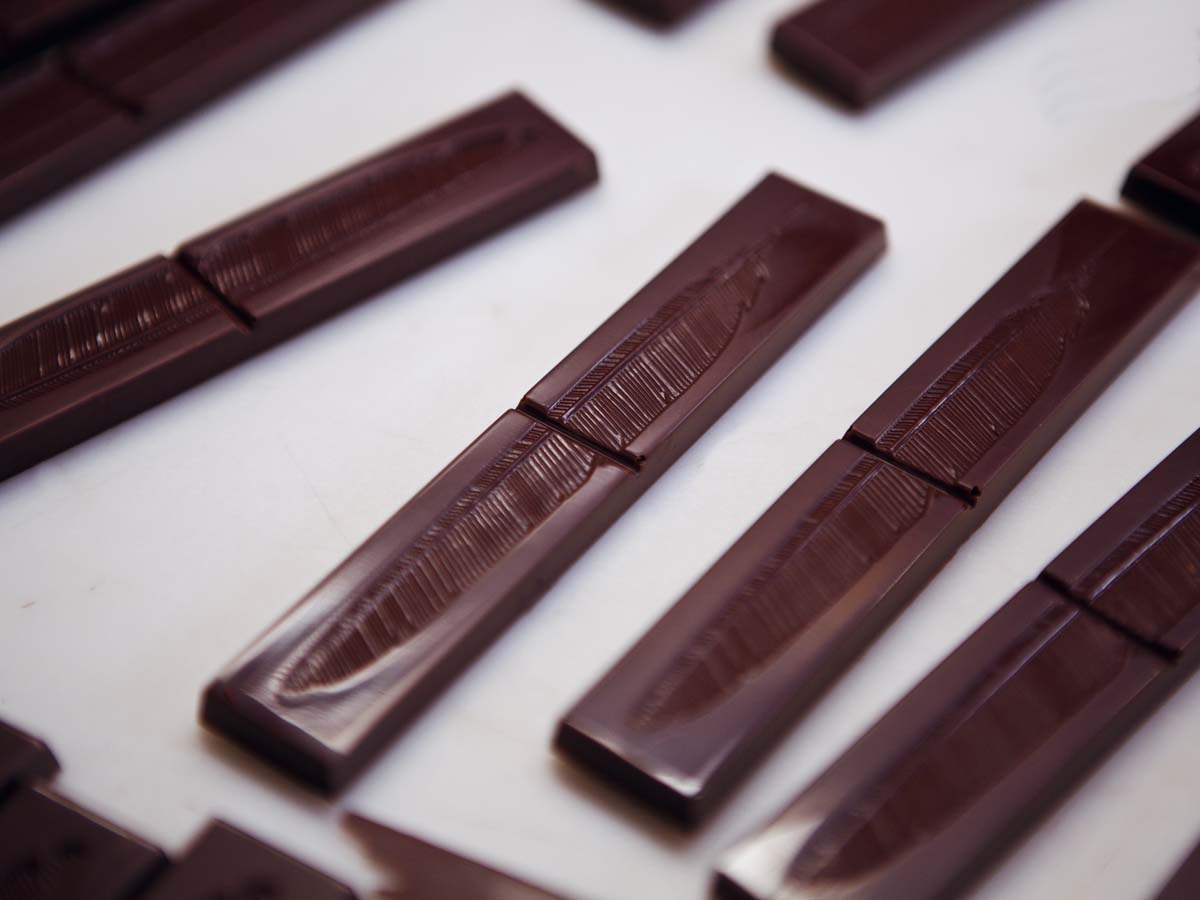
Tempered and cooled bars are de-molded, checked for aesthetic defects and weighed.
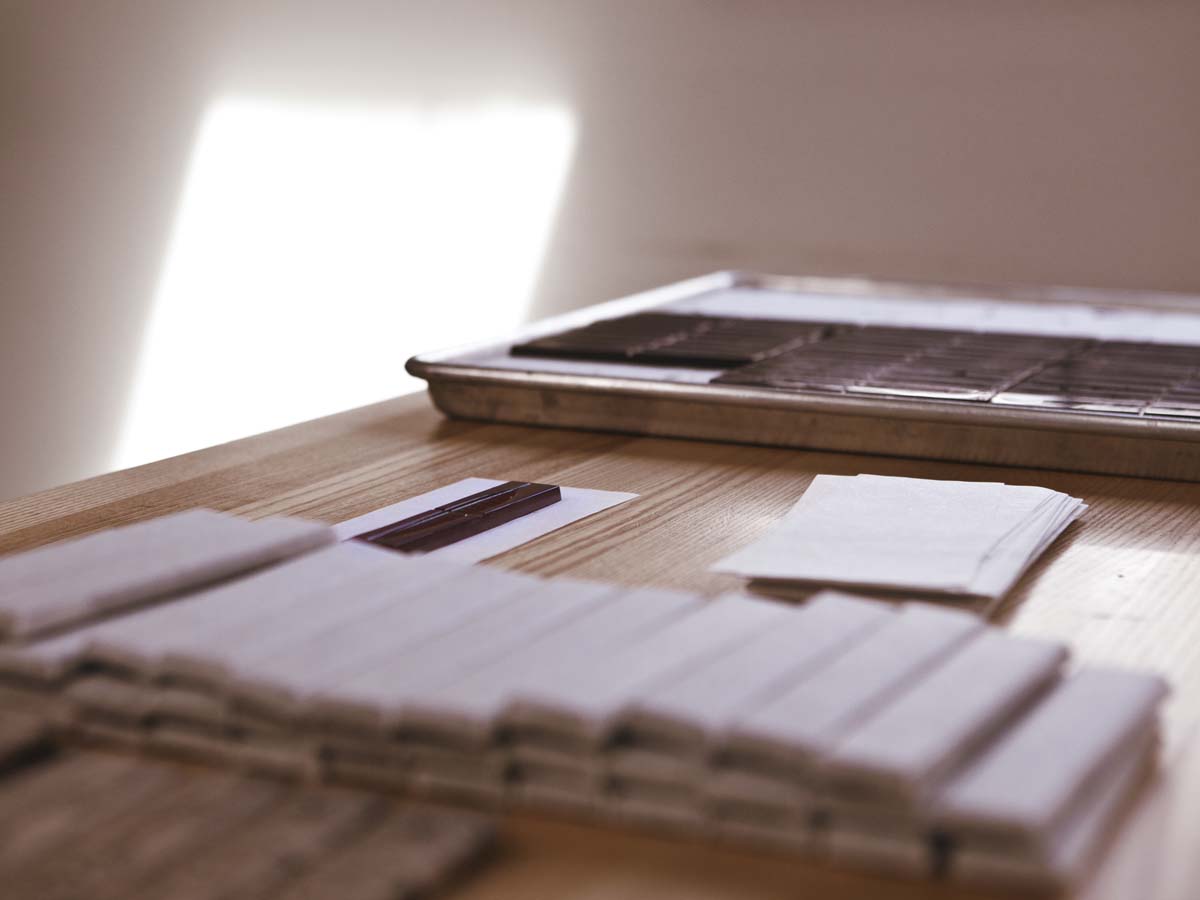
Bars are hand-wrapped in parchment, then wrapped in our labels, which are designed and printed in-house.
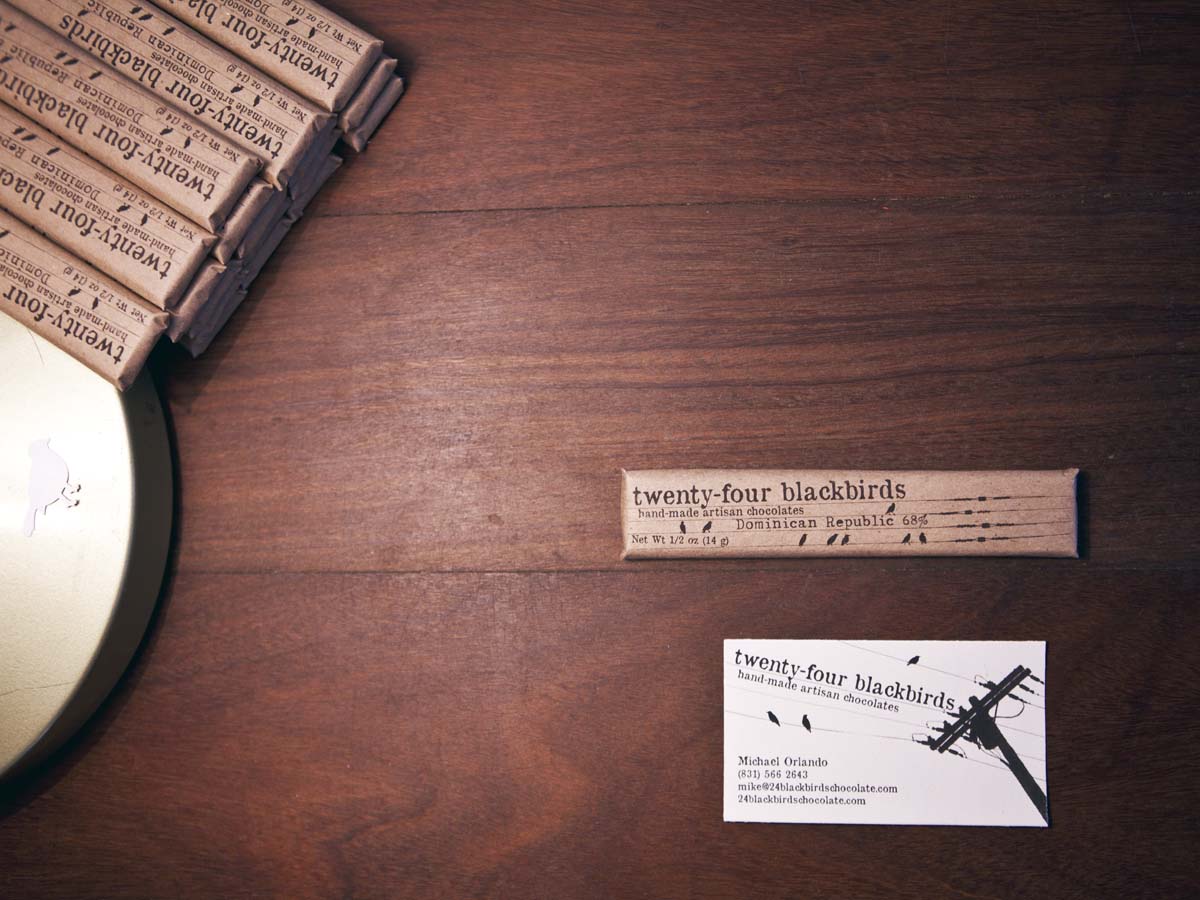
The finished bars are ready to send out for all to enjoy.
















